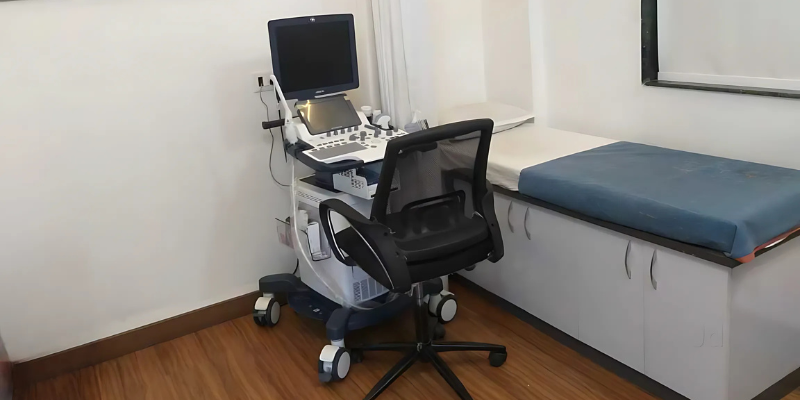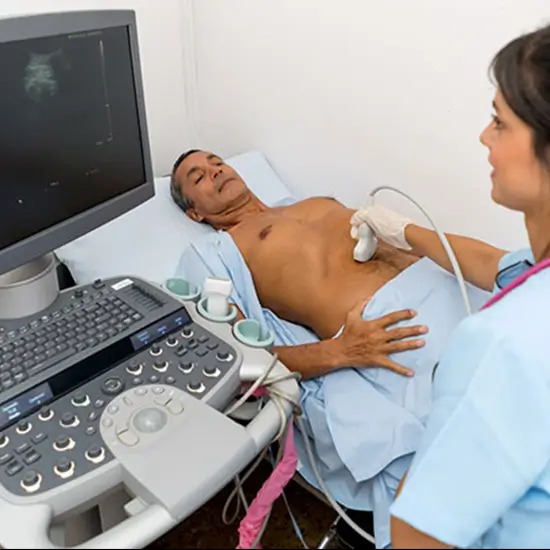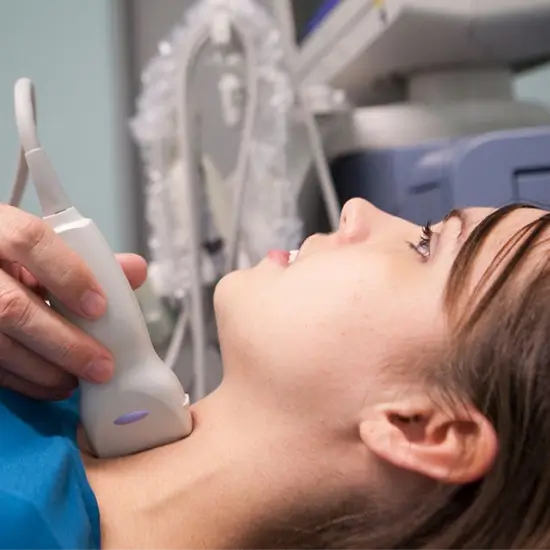
May be one or both sides, according to the clinical history and specific clinicians request.
Assessment of subclavian steal syndrome, aneurysms or pseudoaneurysms, known or suspected peripheral vascular disease, or unequal brachial pressures
Previous vascular surgery, history of diabetes, smoking, CVA/TIA, previous imaging
This examination may be performed on its own, or in conjunction with a unilateral or bilateral lower limb duplex examination, depending on the specific clinical history.
Abdominal bruit, evaluation of aneurysm or pseudoaneurysm, evaluation of inflow of peripheral vascular disease, follow-up of surgical or interventional procedures
Fast for 6 hours prior to examination.
Previous vascular surgery, history of diabetes, smoking, CVA/TIA
This examination may be unilateral or bilateral, and will always include examination of the aorta and iliac arteries (See previous section – Aorto-iliac Duplex Ultrasound).
Claudication, rest pain, ulceration, ischemic changes, evaluation of aneurysm or pseudoaneurysm, follow-up of surgical or interventional procedures.

Symptoms, previous vascular surgery, history of diabetes, smoking, CVA/TIA, previous imaging
Signs:
Deep vein thrombosis (DVT), chronic venous insufficiency (CVI), and varicose veins can all be detected using ultrasound. Leg soreness, redness, and oedema are possible symptoms.
Analysis:
Your legs’ skin is treated with ultrasound gel, and the ultrasonic probe is moved over the skin’s surface.
The technician may need to compress your leg or foot and apply strong pressure to your skin many times during the DVT assessment. This examination is deemed urgent.
Though it often takes a bit longer to complete, the CVI study is conducted similarly to the DVT assessment. This examination is not regarded as urgent.

Ultrasound utility: Penile Doppler Ultrasound testing is a very helpful inquiry for Peyronie’s disease and erectile dysfunction (ED). It is an advanced test that measures the flow of blood into and out of your penis objectively. Important details on the nature of penile anatomy and function, both in the erect and non-erect states, will be provided by this test.
Thus, the Doppler ultrasound can assist detect if the underlying cause of ED is an arterial problem (blood inflow), a venous leak problem (blood outflow), or both. This ultrasound’s diagnosis of arterial illness in the penis might be connected to a more widespread arterial disease, such the heart.
It will also evaluate the kind of scar tissue and plaque in your penis if you have Peyronie’s disease. This will assist in determining if you qualify for specific treatments or procedures. It will also provide a direct assessment of your penile curvature.
How is the test conducted?
To examine the internal tissues, arteries, and veins, specialised ultrasonography is used to view into the penis. You may need to take some medicine to acquire an erection in order to obtain the most information possible. This mimics “real-life” as well. A small needle is used to inject this drug into the penis. After then, the drug starts working on its own for ten minutes or so. You could require more than one injection, depending on the state of your penis. The only aspect of the exam that might cause some discomfort is this one. The majority of men say that it feels “like a hair being pulled out the back of my hand.” In just three seconds, the entire operation is finished.
The doctor will check for penile abnormalities after determining that you responded satisfactorily to the injection. Following the ultrasound, a physician will determine and quantify the penile integrity, venous outflow, and arterial inflow.
An erection that lasts too long, known as priapism, is the study’s largest possible danger. The penis may sustain injury as a result of this illness. Due to our stringent process, you won’t be allowed to return home until we’ve verified that the erection has diminished.
You will be with at clinic for about 1 hour. This takes into account the injection and the ultrasound.

Signs:
to check for blockages and plaque, also known as “artery thickening,” in the carotid arteries. A history of stroke, smoking, excessive cholesterol, and the presence of recognised vascular disease elsewhere in the body are all grounds for an inquiry.
Getting ready:
No one is needed.